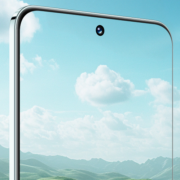Why Low Blue Light Feature on Phones is Essential for Eye Protection
0 Comments/in Blog/by Dominique RizzoThe low blue light feature on phones plays a crucial role in protecting eye health and minimizing the potential negative effects of blue light exposure on visual comfort, eye strain, and long-term eye health. By reducing the amount of blue light emitted by smartphone displays, this feature aims to alleviate digital eye strain, minimize the risk of eye fatigue, and support overall eye protection for users. Understanding the importance of the low blue light feature in safeguarding eye health can help individuals make informed decisions about their screen time habits and prioritize visual comfort when using electronic devices. Below are detailed explanations of why the low blue light feature on phones is essential for eye protection.


Roles of Low Blue Light Feature on Phones
1. Blue Light and Eye Health
Blue light is a high-energy visible light emitted by digital screens, LED lighting, and sunlight. Prolonged exposure to blue light, particularly from screens, can lead to eye strain, discomfort, and potential long-term risks to eye health. Blue light exposure has been associated with digital eye strain, dry eyes, blurred vision, and disruptions to sleep patterns. Minimizing blue light exposure is essential for protecting the eyes and maintaining visual comfort during screen use. And the HONOR 200 price dubai with this function is very worthy for you to know more about it.
2. Alleviating Discomfort and Visual Disturbances
Low blue light settings reduce glare, brightness, and harshness from blue light emissions, making the visual experience more comfortable and less straining on the eyes. By filtering out blue light, this feature can enhance visual clarity, reduce visual disturbances, and improve contrast and color accuracy on smartphone displays.
3. Support for Circadian Rhythms and Sleep Patterns
Blue light exposure in the evening can disrupt circadian rhythms and melatonin production, affecting sleep quality. The low blue light feature helps maintain the body’s natural sleep-wake cycle by reducing blue light exposure before bedtime. By minimizing blue light exposure, users may experience improved sleep onset, better sleep quality, and enhanced overall sleep patterns, leading to a more restful and rejuvenating night’s sleep.
4. Prevention of Long-Term Eye Health Risks
Excessive blue light exposure has been linked to an increased risk of macular degeneration, a leading cause of vision loss. The low blue light feature helps reduce this risk by limiting blue light exposure and protecting retinal health. Chronic exposure to blue light from screens can contribute to digital eye fatigue, a condition characterized by eye discomfort and visual disturbances. The low blue light feature helps alleviate these symptoms and protect against long-term eye strain.
5. Promotion of Healthy Screen Time Habits
The low blue light feature encourages users to practice balanced screen time habits by reducing the impact of blue light exposure on eye health without completely avoiding device use. By incorporating low blue light settings into daily smartphone usage, individuals can create a more eye-friendly screen time environment that prioritizes visual comfort, eye protection, and overall well-being.
6. Adaptation to Diverse Lighting Conditions
Many smartphones with a low blue light feature offer adjustable settings for blue light reduction, allowing users to customize the intensity based on ambient lighting conditions and personal preferences. Activating the low blue light feature or night mode in the evening signals to the body that it is time to wind down and prepare for sleep, supporting healthy circadian rhythms and promoting relaxation.
Conclusion
By utilizing the low blue light feature on phones and incorporating healthy screen time habits, individuals can safeguard their eye health, minimize eye strain, and protect against the potential risks associated with blue light exposure. This feature plays a vital role in promoting visual comfort, maintaining circadian rhythms, and supporting overall eye protection during smartphone use. Embracing the low blue light technology as an essential feature for eye health empowers individuals to prioritize visual well-being, optimize screen time habits, and cultivate a healthier relationship with electronic devices in the digital age.


Leave a Reply
Want to join the discussion?Feel free to contribute!